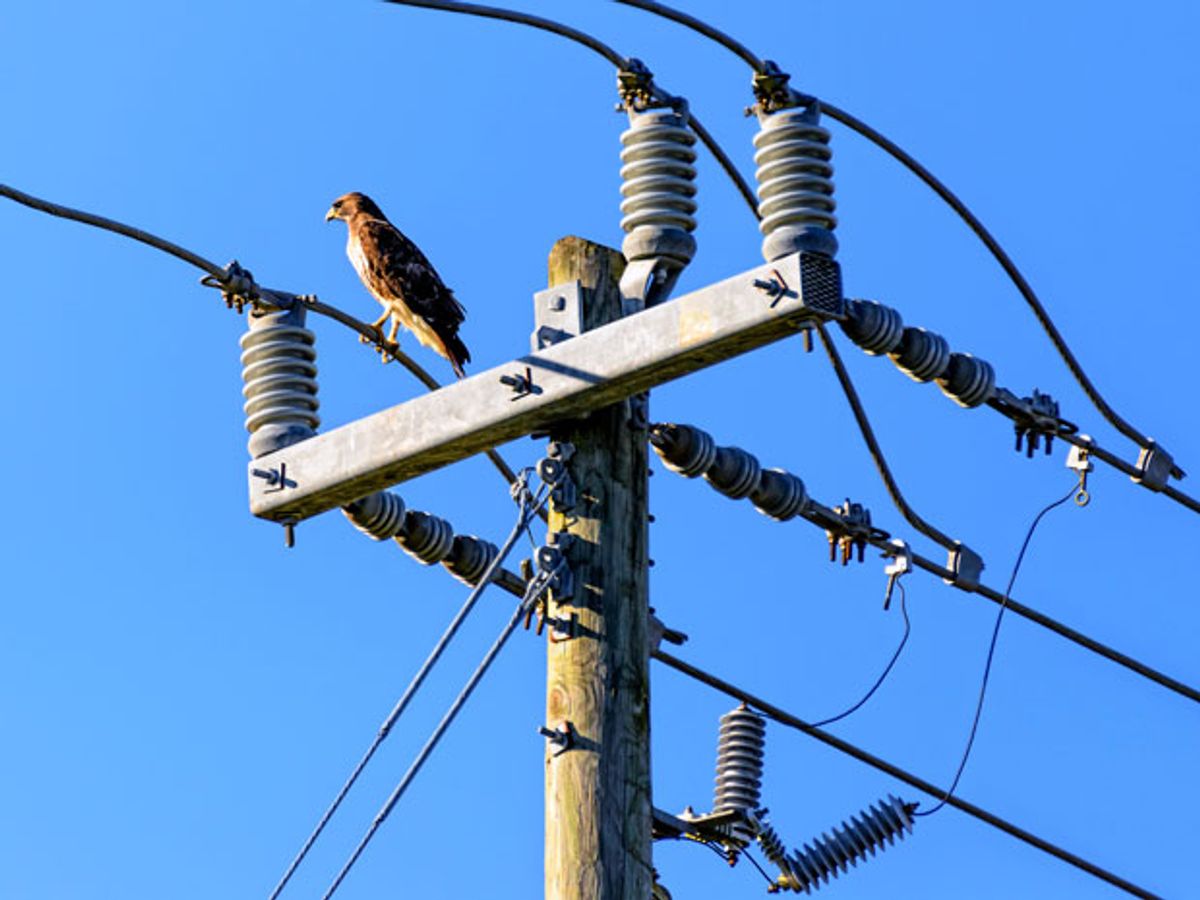Bird poop once crippled the most wide-ranging power grid in the world, a new historical study reveals.
In 1913, two 386-kilometer-long electric lines, the longest in the world at the time, began carrying power from the Big Creek hydroelectric dams in the Sierra Nevada mountains southward to customers in Los Angeles. In 1923, the lines were upgraded to carry 220,000 volts, making them among the world's highest voltage lines at the time and pushing the limits of what was thought to be possible with the technology of the day.
However, unexplained short circuits that cropped up in the months after the expensive upgrade threatened to turn this marvel of engineering into a failure. The rate of disruptive flashovers—arcs of electric current that sometimes leapt from the wires to the steel towers and into the earth—jumped dramatically, leading to power interruptions seconds to minutes long every two or three days on average.
Engineers at power company Southern California Edison proposed a variety of causes for this mysterious problem, including lightning storms, moisture on spider webs, and "rivers of ions" in the air, but none could fully solve the puzzle. After a few desperate months of investigation, researchers finally discovered the culprit—vast amounts of bird excrement, historian of science Etienne Benson at the University of Pennsylvania explains in a new study in the journal Environmental Humanities.
The solution emerged once a worker saw what appeared to be an eagle perched on top of a transmission tower. As the bird took to flight, it emptied its bowels, letting loose a long jet of droppings onto the power lines.
Hawks and eagles were apparently attracted to the transmission towers as high lookout points from which to hunt in the largely treeless but prey-rich landscape in the area. They gave off streams of highly electrically conductive excrement as they launched from towers, presumably to lighten their load during flight. Lab tests later confirmed such "bird streamers" could have caused flashovers by carrying current from the power lines to the steel towers even without touching either. The poop trails themselves were destroyed by the concentrated energy of the resulting electric arc, leaving no observable evidence.
In response, Southern California Edison installed barriers, spikes and excrement-catching pans on the towers—at considerable expense. And the number of short circuits soon dropped significantly. As the power grid became more sophisticated, it was segmented and automatic relays were installed so that power could be more easily restored, as well.
Still, bird streamers continue to be a problem even in the 21st century, with research on them continuing across the globe in areas such as Florida, China, Estonia, and South Africa.
And it’s not just birds, of course, IEEE released a revised standard this week (IEEE 1264) on how to prevent disruption from animal incursions into substations. According to a survey cited in the standard: 90 percent of utilities had experienced squirrel related substation issues, 86 percent had bird trouble, and raccoons came in third at 57 percent. Snakes, which would seem to be ideal conductors, rang in at 46 percent.
Charles Q. Choi is a science reporter who contributes regularly to IEEE Spectrum. He has written for Scientific American, The New York Times, Wired, and Science, among others.



